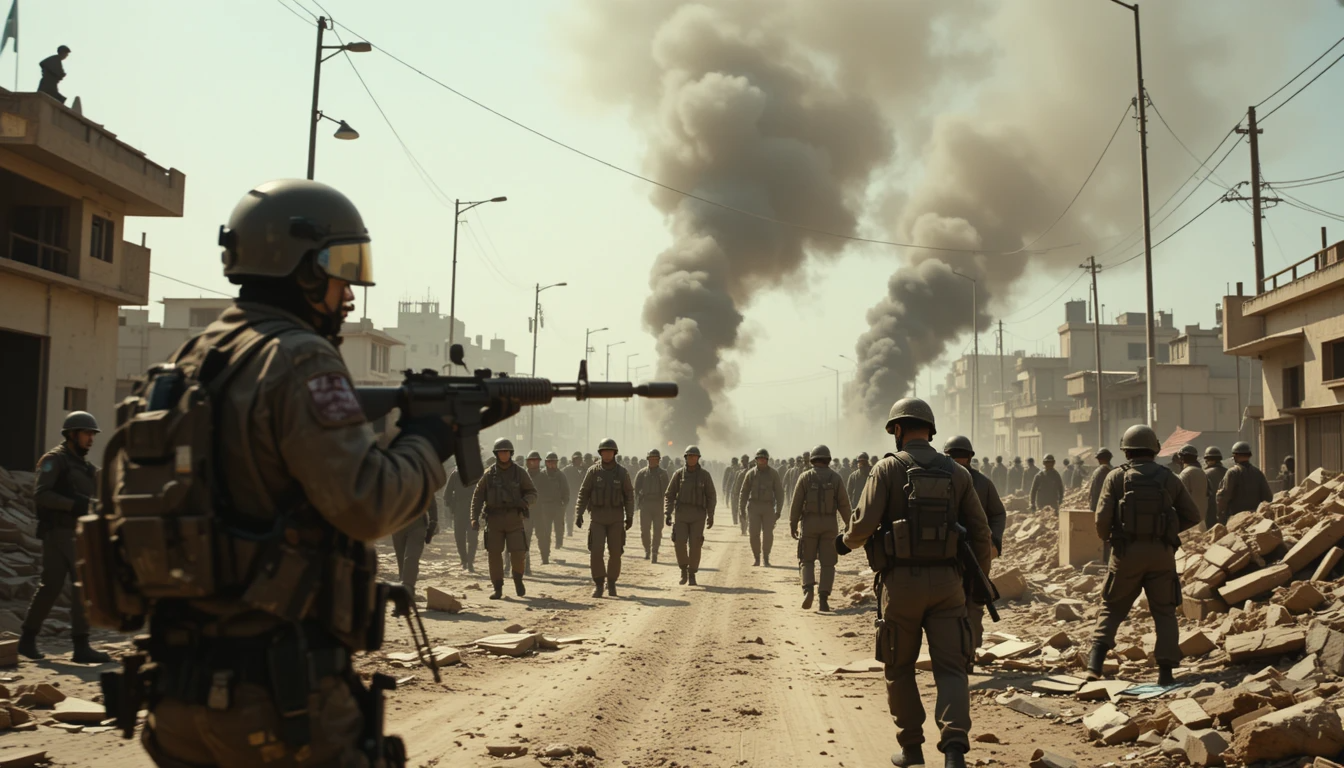Gaza Under Fire: The Escalating War and the Collapse of a People

The air smells of concrete dust and scorched metal. The skyline of Gaza, once scattered with towers, is now a jagged silhouette of ruin. As the Israeli military continues its most devastating campaign in years, Gaza has become a city of shadows — its streets emptied by fear, its hospitals overwhelmed, and its people caught between politics and survival.
What began as a military retaliation has spiraled into a grinding war of attrition, one where the lines between targets and civilians blur by the hour.
A Return to War
The latest phase of the war reignited in mid-March 2025, after a temporary ceasefire collapsed. The Israeli government, led by Prime Minister Benjamin Netanyahu, accused Hamas of reneging on a hostage-release deal and immediately resumed full-scale operations — launching what it called “Operation Might and Sword.”
In a single night, over 400 Palestinians were killed — the highest one-day toll since the start of the conflict. Israeli forces began a new ground offensive into the heart of Gaza City, focusing on the densely populated neighborhoods of Shuja'iyya and Daraj. The result: shattered streets, destroyed homes, and another flood of people fleeing south — if there was anywhere left to go.
Israel insists it is targeting militants, and many Hamas commanders have reportedly been killed in drone strikes and building collapses. But the numbers tell another story: children, mothers, elderly men buried beneath rubble. Schools turned to morgues. Hospitals running on candlelight and desperation.
A Humanitarian Abyss
The human cost is staggering. According to Gaza’s Health Ministry, more than 54,000 people have been killed since the war began in October 2023, the majority of them civilians. Over 124,000 are wounded — many with injuries that will never fully heal, in a place where nearly every hospital is barely functioning or has been bombed.
Famine now stalks the enclave. The World Food Programme reported in April that it had run out of food, as Israel tightened its blockade, restricting aid convoys and fuel shipments. Entire families survive on weeds and salty water. A UN report warned in early June that over 65,000 children under five are suffering from acute malnutrition. The word starvation is no longer a prediction — it's a headline.
Homes have vanished. Entire blocks have been leveled. According to satellite data and UN officials, 69% of buildings in Gaza have been damaged or destroyed, including over 245,000 homes. The Strip, home to 2.3 million people, now resembles a concrete graveyard. The UN estimates it could take centuries to remove the rubble.
Voices Lost and Silenced
For Gazans, daily life is reduced to survival. There are no safe zones — not in the south, not in hospitals, not in schools. “Everywhere is a target,” said a nurse in Khan Younis, speaking anonymously for fear of reprisal. “We treat patients in hallways and stairwells. When we run out of medicine, we give painkillers. When we run out of painkillers, we pray.”
On May 25, the Israeli military struck a school in Daraj housing displaced families. Thirty-six people were killed, including 18 children. The army claimed Hamas operatives were using the site. But for those digging through rubble with bare hands, there were only stuffed toys, backpacks, and shoes — reminders that the victims were not fighters, but families.
Why Now?
The official justification is clear: destroy Hamas, recover hostages, and ensure Israeli security. But the tactics have drawn increasing criticism — even from allies. Germany, long one of Israel’s staunchest defenders, called the destruction in Gaza “unjustifiable.” Humanitarian organizations have condemned the blockade and warned that the deliberate denial of aid could amount to a war crime.
Within Israel, the mood is complex. While many support the operation, cracks are showing. Families of hostages have taken to the streets demanding that diplomacy take priority over military force. Others fear the war is creating a deeper moral and strategic crisis — one that cannot be won with bombs.
A War Without End
What happens next? Peace talks are stalled. Trust is shattered. The humanitarian crisis worsens by the day. Even if the war stopped tomorrow, Gaza would still be a place of ghosts — its schools turned to rubble, its families grieving, its future uncertain.
And still, the bombs fall.
Israel says the war will continue “until all objectives are met.” Hamas remains active, though battered. But the greater casualty may be hope itself — hope for a political solution, for a life beyond violence, for children who dream of anything but war.
Conclusion: A Choice Ahead
Gaza is not just a battlefield. It is a warning. When military logic overrides humanity, and when civilians become collateral in an endless war, no one wins. The world watches, but watching is no longer enough.
In Gaza, the sky is filled with drones. The streets echo with silence. And beneath the rubble, a generation waits — for food, for peace, for someone to say: enough.
- Adult
- Art
- Causes
- Crafts
- Dance
- Drinks
- Film
- Fitness
- Food
- الألعاب
- Gardening
- Health
- الرئيسية
- Literature
- Music
- Networking
- أخرى
- Party
- Religion
- Shopping
- Sports
- Theater
- Wellness

